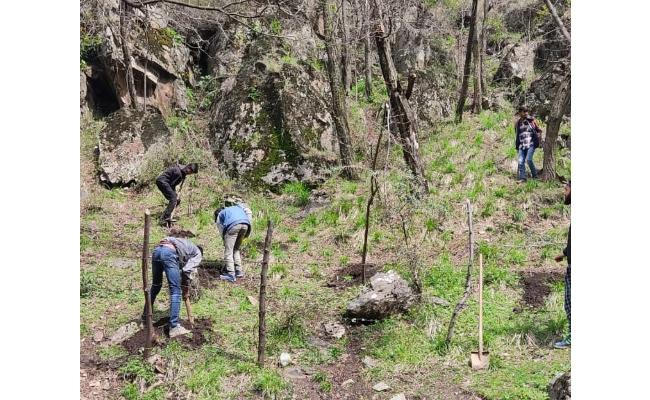How thousands of trees are protecting Kashmir's Hangul population

The magnificent hangul (Cervus elaphus hangul) is considered to be the state animal of Kashmir and the good news is that there are signs of the once elusive animal returning to its habitats. There has been a sighting of a herd in the Ganderbal district and there is hope that the Kashmiri red deer will return to regions that are now being augmented with a lush green cover. Social organization Grow-Trees.com has undertaken a plantation activity of 25,000 tree saplings around the corridor of Dachigam National Park on Forest Department land in Dara, Sharasbal, Brein-Nishat, Wangath, Kanmoh, Khangund and Khimber Conservation Reserves in Kashmir.
Environmental expert Supriya Patil says, “The aim is the enhancement of hangul habitat and its biodiversity and the replenishment of groundwater reserves. It is important to do this work as the hangul, according to the International Union for Conservation of Nature (IUCN), is a "Critically Endangered" species. In 1940, the population of hanguls was around 3000 but as per a 2019 census, only 237 hanguls remained, mainly in the Dachigam National Park area. IUCN in fact suggested, "habitat and natural process restoration" as one of the "conservation actions needed”. Hopefully, the careful planting of trees will help rehabilitate the species and restore the lost forests of Dachigam National Park, to their former glory.”
The initiative is also engaging and employing local communities in all stages of the plantation and spreading awareness about the harmful impact of wildlife trafficking and human invasion into wildlife habitats. The trees will also stall soil erosion, mitigate natural disasters, and sequester atmospheric carbon. Trees are important for the survival of the hangul population but as is the case in so many habitats, the biodiversity and indigenous ecosystem of the region is under threat due to heedless human activities, poaching, livestock grazing, constant fragmentation, and wildlife trafficking. The careful planting of trees will help improve the habitat cover and increase the availability of browsing material for the hangul as well as help in water catchment.
The Hangul population has registered a marginal increase in the Kashmir Valley. It is now 261, compared to 237 in 2019 and Supriya hopes the numbers will continue to rise.




